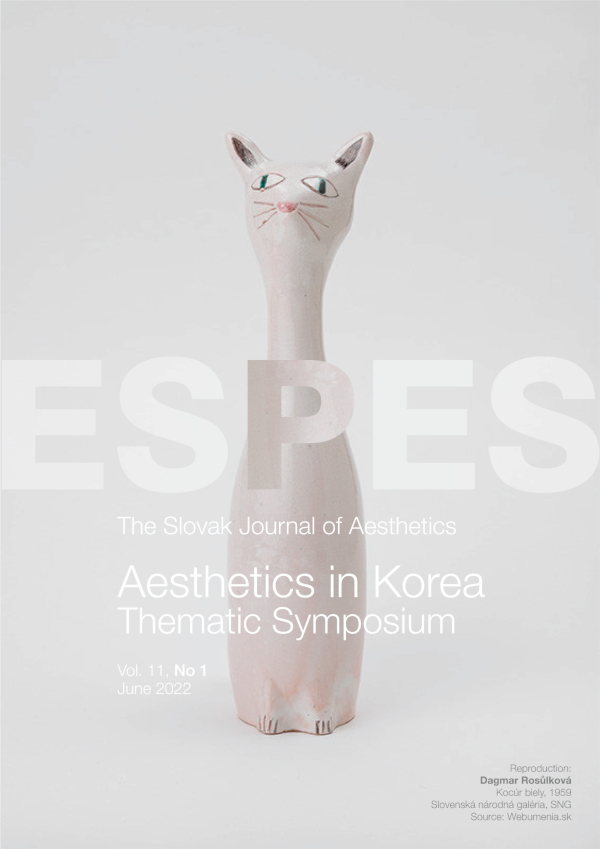Cho Jihoon’s Korean Aesthetics: the Concept of ‘Meot’
Cho Jihoon’s Korean Aesthetics: the Concept of ‘Meot’
Author(s): Soohyun KimSubject(s): Aesthetics
Published by: Spoločnosť pre estetiku na Slovensku a Inštitút estetiky a umeleckej kultúry Filozofickej fakulty Prešovskej univerzity v Prešove
Keywords: Taste; Meot; Non-duality; Pungryu
Summary/Abstract: Cho Jihoon’s aesthetics is based on the Confucian literati’s spirit, choesado, and on the Buddhist idea of non-duality. He presented the theory of meot, meaning taste originally, as a Korean-specific aesthetic category in his Study of Meot, where he synthesized the previously discussed theories of other scholars into twelve elements. Discussing the formal characteristics of works that have the aesthetic quality of meot, he took unrefinedness as basic, and cited diversity, eurhythmy, and curvature as its subtraits. Discussing the compositional power or method of expression that provokes meot, he took hyperstandard as basic, and the subtraits include maturity, distortion, and playfulness. Furthermore, he discussed meot as an emotion or idea that Koreans live with, where the most basic one is otiosity (impracticality), and assimilation, moderation, and optimism are its subtraits. Finally, he identified meot as the ultimate aesthetic state with pungryu, a lifestyle in harmony with Nature, which is originated from the ancient Silla period.
Journal: ESPES
- Issue Year: 11/2022
- Issue No: 1
- Page Range: 40-49
- Page Count: 10
- Language: English

